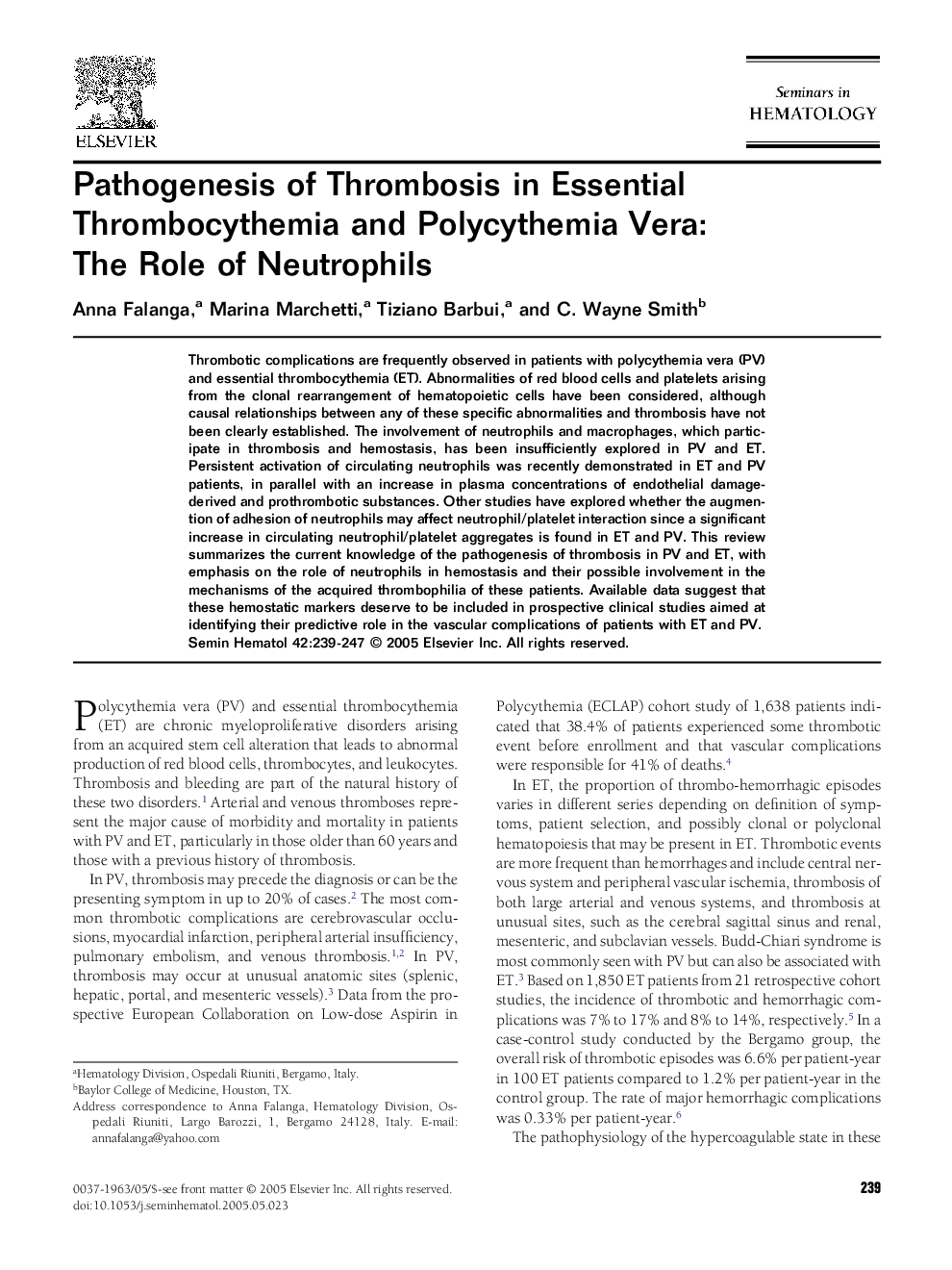| Article ID | Journal | Published Year | Pages | File Type |
|---|---|---|---|---|
| 9258411 | Seminars in Hematology | 2005 | 9 Pages |
Abstract
Thrombotic complications are frequently observed in patients with polycythemia vera (PV) and essential thrombocythemia (ET). Abnormalities of red blood cells and platelets arising from the clonal rearrangement of hematopoietic cells have been considered, although causal relationships between any of these specific abnormalities and thrombosis have not been clearly established. The involvement of neutrophils and macrophages, which participate in thrombosis and hemostasis, has been insufficiently explored in PV and ET. Persistent activation of circulating neutrophils was recently demonstrated in ET and PV patients, in parallel with an increase in plasma concentrations of endothelial damage-derived and prothrombotic substances. Other studies have explored whether the augmention of adhesion of neutrophils may affect neutrophil/platelet interaction since a significant increase in circulating neutrophil/platelet aggregates is found in ET and PV. This review summarizes the current knowledge of the pathogenesis of thrombosis in PV and ET, with emphasis on the role of neutrophils in hemostasis and their possible involvement in the mechanisms of the acquired thrombophilia of these patients. Available data suggest that these hemostatic markers deserve to be included in prospective clinical studies aimed at identifying their predictive role in the vascular complications of patients with ET and PV.
Related Topics
Health Sciences
Medicine and Dentistry
Hematology
Authors
Anna Falanga, Marina Marchetti, Tiziano Barbui, C. Wayne Smith,
